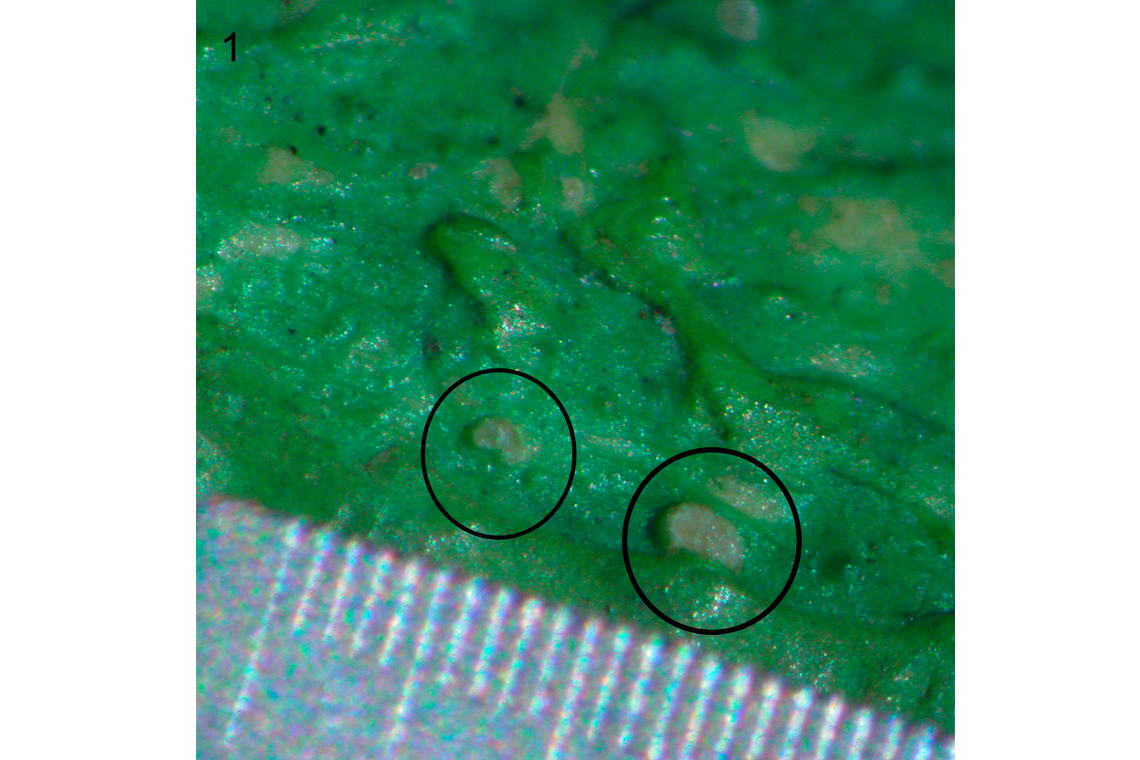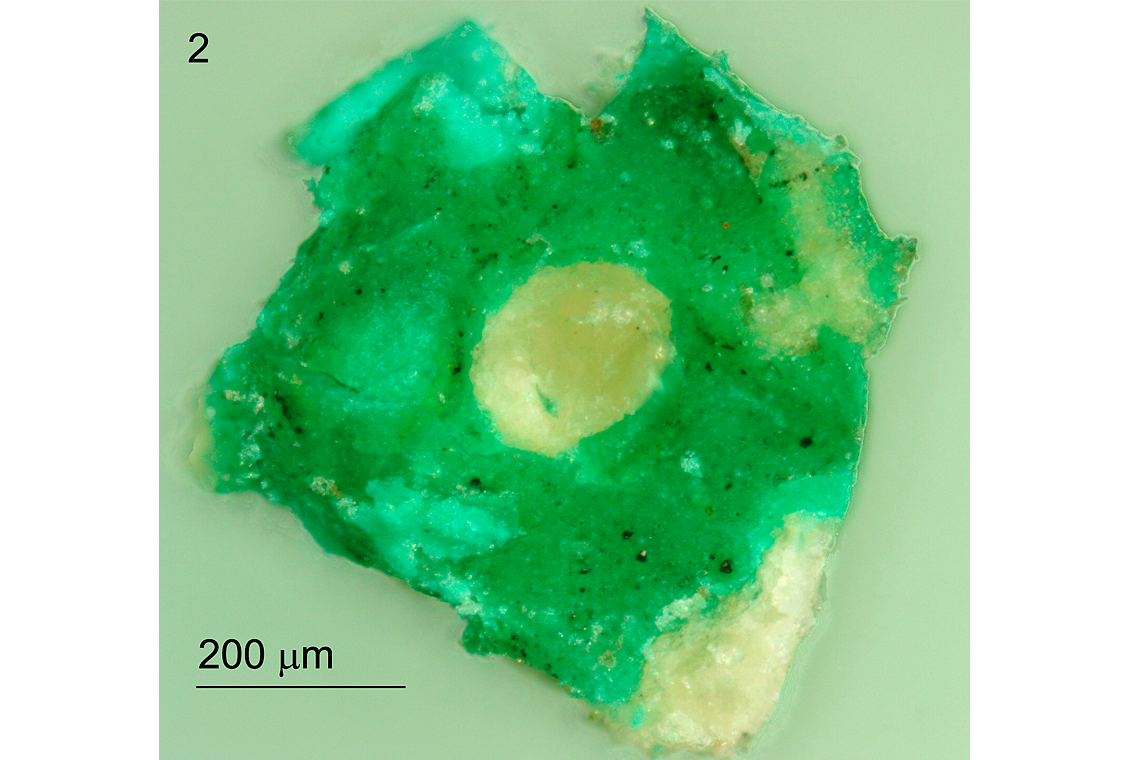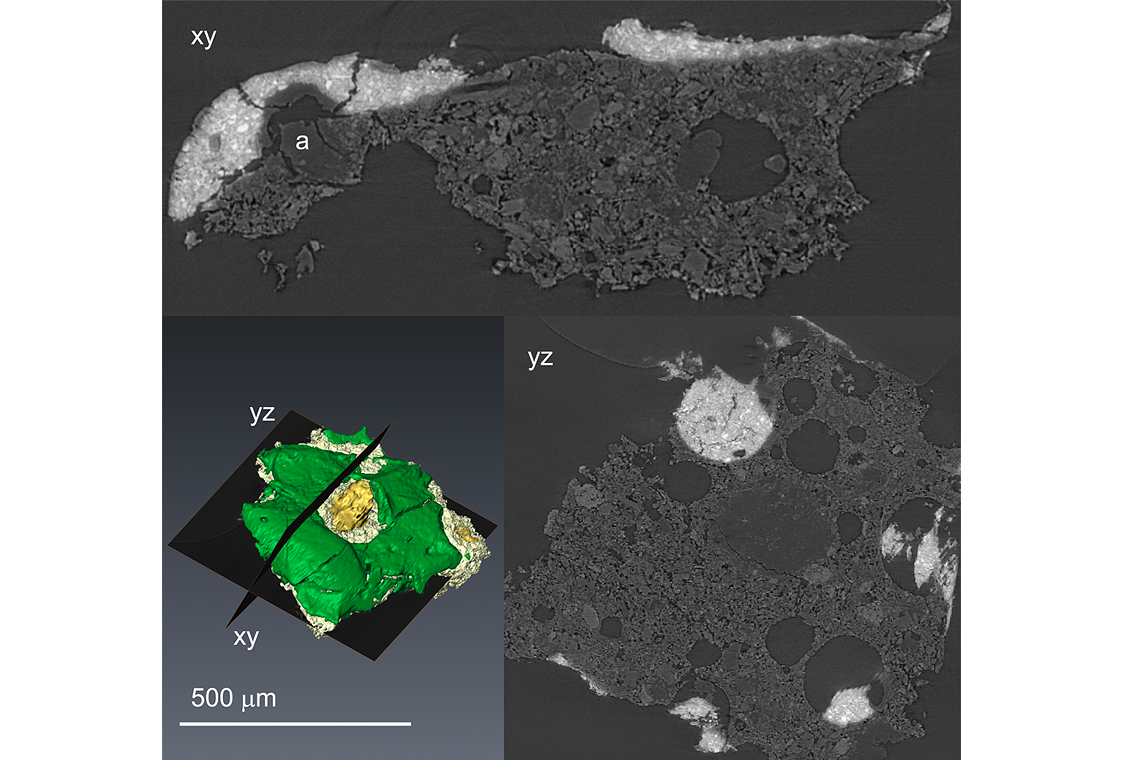Subproject to synchrotron x-ray microtomography of paint samples
Led by
Ester S. B. Ferreira
Team
Jaap J. Boon (Associate Fellow), Nadim C. Scherrer, Karin Wyss
Partner
Paul Scherrer Institut (PSI), Villigen (Federica Marone)
Project description
In our examination of the painting Autumn landscape by Cuno Amiet (1906, oil on canvas), we have reported for the first time the formation of calcium soaps in a painting. The soaps were characterised by multiple analytical techniques, namely FTIR, CI-DTMS, and GCMS, and by 2D and 3D correlative microscopy combining light microscopy, SEM-EDX and SRXTM data. Based on all the data gathered we could propose a reaction path.
Synchrotron radiation x-ray microtomography (SRXTM) played a crucial role in this study. Information concerning the porosity of the ground layer, the location of early reactivity sites at the interface between the ground and the paint layers as well as the overall appearance of large protruding masses of white material were fundamental in the development and support of a hypothesis for the reactivity mechanism.

Detail from an area of Autumn landscape affected by the formation and eruption of calcium soap aggregates (smaller scale division = 100 micrometers)

Light microscopy image of a sample

Bottom left: SRXTM of the sample. Top: xy orthoslice extracted from the SRXTM, showing an early calcium soap formation site (a). Bottom right: yz orthoslice
The SRXTM orthoslices show an early calcium soap formation site at the interface between ground and paint as well as the extremely porous nature of the ground.
Movie showing details of location and morphology of a calcium soap formation site at the interface between ground and paint.
The project was supported by
Swiss Re, Zürich
Publication
Ferreira E. S. B, Boon J. J., Marone F., Stampanoni M., «Study of the mechanism of formation of calcium soaps in an early 20th century easel painting with correlative 2D and 3D microscopy», in: Proceedings of the 16th Triennial meeting of the ICOM Committee for Conservation in Lisbon, James & James 2011